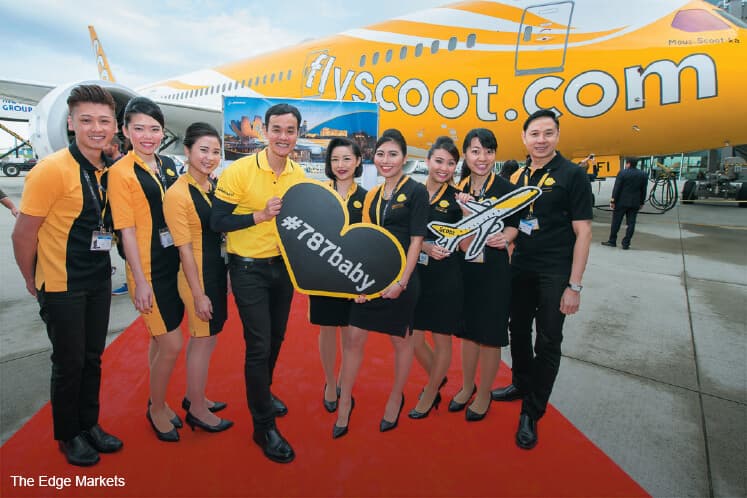
This article first appeared in The Edge Malaysia Weekly on May 22, 2017 - May 28, 2017
PROPELLED by the rise of low-cost carriers (LCCs), creation of new routes and strong air travel demand, Southeast Asia is projected to require 3,860 new airplanes valued at US$565 billion over the next two decades.
In its most recent market forecast, US plane maker The Boeing Company said total global demand for new aircraft is expected to reach 39,620 units worth US$5.9 trillion over the same period.
In other words, Asean, where air traffic has grown more than 10% annually since 2009, will account for almost 10% of the overall world demand in both unit and value terms between 2016 and 2035.
According to Boeing Support and Services senior brand manager Jim Proulx, growth in the global aviation market will be driven by emerging economies and LCCs, continued strong replacement demand and the opening of new routes, as well as new planes with new capabilities.
“The LCC business model has been growing rapidly in Asia for the last decade. Not only have the LCCs gained market share from the full-service carriers, they are also drawing more passengers from other transport such as buses, trains and ferries,” he said during a media briefing at Boeing Customer Experience Center in Renton, Washington, on May 9.
Proulx points out that nearly three-fourths (2,820 airplanes) of Southeast Asia’s new deliveries are for growth, while the remaining quarter (1,040 airplanes) are for the replacement market.
“Southeast Asia is a fast-growing market with a 10% average annual growth. In comparison, the world economy is forecast to grow at 2.9% in the next 20 years, number of airline passengers at 4%, passenger traffic at 4.8%, and cargo traffic at 4.2%,” he highlighted.
Boeing does not release demand figures for individual countries.
Of theglobal demand for airplanes, anticipated at 39,620 units over the next 20 years, single-aisle jets, such as Boeing 737 and Airbus A320, are the most sought-after, amounting to 28,140 units or 71% of the total global demand. This is followed by small wide-body (13%), medium wide-body (9%) and regional jet (6%). In terms of market value, single-aisle aircraft make up US$3 trillion, or 51% of the total value.
Zooming in on Southeast Asia, he said single-aisle jets are also the most popular, with 2,980 airplanes or 77% of the total demand. This is followed by small wide-body (15%) and medium wide-body (6%) jets. Single-aisle aircraft make up US$325 billion, or 57% of the total value, in the region.
The Boeing Company, a century-old aerospace company, recorded revenue of US$94.6 billion in 2016, of which US$65 billion was contributed by Boeing Commercial Airplanes. Historically, 70% of the revenue from commercial airplanes come from customers outside the US.
Interestingly, Boeing aircraft represent half of the world’s fleet, with more than 10,000 jetliners in service.
To date, over 65 customers from six continents have placed orders for more than 1,200 Boeing 787 Dreamliners, valued at more than US$290 billion, making it the fastest-selling twin-aisle plane in Boeing’s history.
At 472 million cu ft and sitting on 98.3 acres, Boeing’s factory in Everett, Washington, is recognised by the Guinness Book of World Records as the largest manufacturing building in the world by volume. The site can accommodate 75 American football fields, or 911 National Basketball Association basketball courts.
Save by subscribing to us for your print and/or digital copy.
P/S: The Edge is also available on Apple's AppStore and Androids' Google Play.